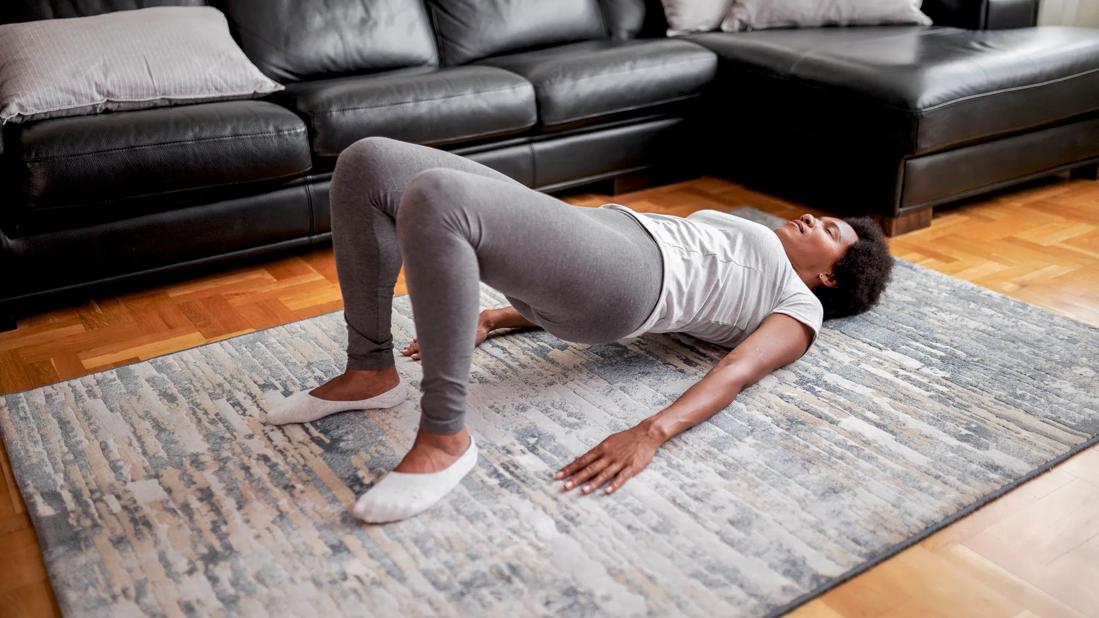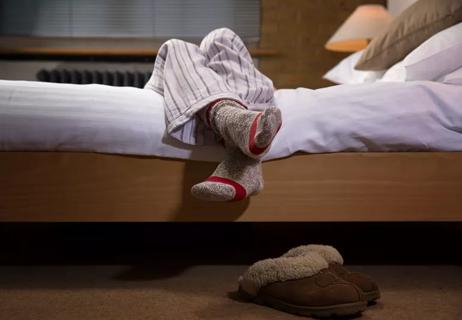Strengthening your pelvic floor can help you avoid incontinence issues and sexual dysfunction

You do bicep curls to keep your arms strong. Crunches to keep your core in shape. Squats to build lower-body stability.
Advertisement
Cleveland Clinic is a non-profit academic medical center. Advertising on our site helps support our mission. We do not endorse non-Cleveland Clinic products or services. Policy
But there’s another muscle group that you may not be giving the attention you need. It’s your pelvic floor, a network of muscles in your pelvis that’s critical to your quality of life.
How do you do pelvic floor exercises? And do you really need to?
Gynecologist Amy Gee, MD, shares advice about how to strengthen your pelvic floor and why it matters.
Your pelvic floor sits in the lower part of your torso between your abdomen and legs. It forms a kind of bowl that supports your bladder, bowels, rectum, urethra and other pelvic organs. Exercising your pelvic floor helps maintain strength and integrity so those vital organs can work their best.
Exercises that target your pelvic floor can help you avoid troubles like:
Because of the nature of the female anatomy, pelvic floor exercises are more commonly recommended for women.
“The vaginal canal is an open space. And that void can lend itself to issues for females if your pelvic floor becomes weakened,” Dr. Gee explains.
Advertisement
But people of any sex can benefit from a strong pelvic floor.
The muscles in your pelvic floor tend to weaken as you age. Pregnancy and vaginal births can speed that along. And if you’re carrying extra weight (particularly around your midsection), it can put added pressure on your pelvic floor muscles.
Urinary incontinence is one of the most common signs of a weak pelvic floor. That can look like:
Dr. Gee recommends pelvic floor strengthening for most people starting in their 20s. But it’s worth pointing out that, while many of us can benefit from exercising our pelvic floor, it may not be for everyone.
Some people have particularly tight muscles in their pelvic floor. It’s called pelvic floor dysfunction and can cause issues like trouble releasing pee or poop. And it can cause pain during intercourse if the muscles in your vagina can’t relax.
In that case, exercises to strengthen your pelvic floor muscles can exacerbate your troubles. Talk with a healthcare provider about options for pelvic floor relaxation exercises.
It’s not especially difficult to engage your pelvic floor muscles, but it can take some practice to identify the right muscles to squeeze.
To start, pretend you have to pee. Now, squeeze the muscles you’d use to hold it. Those muscles are your pelvic floor.
Still not sure you’re getting the right spot?
“Sometimes, it can help to place a finger in your vagina and squeeze until you feel those muscles activate,” Dr. Gee advises.
Still not finding it? A pelvic floor physical therapist may help.
Physical therapists sometimes use extra tools to help you target the right muscles.
That can include things like biofeedback techniques, which use sensors to monitor your muscle activity as you engage your pelvic floor. That feedback can help you target the right muscles to perform the exercises correctly.
Some people also try vaginal weights, which are special weights shaped like cones or teardrops that can be inserted in the vagina and used to train your pelvic floor. It’s not about adding weight in the same way you would if you’re bench-pressing. Think of these tools as less about pumping up the resistance and more as a way to help you identify the correct muscles so you can make sure you’re engaging your pelvic floor properly.
Before we jump into the exercises, let’s set some expectations.
For starters, there are no quick fixes to strengthen your pelvic floor. Like any other muscle, it takes some time to build up.
Advertisement
“I always tell patients to equate it to trying to increase your cardio; it takes time and dedication,” Dr. Gee shares. “And like with any other exercise program, you want to start slowly and build up.”
She recommends these exercises.
Kegel exercises are the most widely recommended pelvic floor exercises. And for good reason — they’re the only exercises that specifically target your pelvic floor.
“There are a lot of different advice about how to best do Kegels,” Dr. Gee notes. “But there’s no data that shows any specific regimen that’s best for everyone.”
That said, here’s one way to get started:
Easy? Try a set of four one-second Kegels and then hold the fifth for five seconds.
“Holding a Kegel for several seconds can be pretty challenging,” she recognizes. “But the more you try, the more stamina you’ll build. I try to tell patients to work toward a five-second hold. If you can get there, you’re doing really well.”
Here's a pro tip for people dealing with stress incontinence — a tendency to leak urine when you sneeze, cough, laugh or lift things: Do a quick, strong Kegel right before the activity that causes you to leak. (It's called "the knack.")
Advertisement
And another tip: Tickle in your nose? Squeeze before you sneeze.
If you’re up for a bigger challenge, you can incorporate Kegels into other stretches and exercises, like cat-cow pose.
Here’s how:
It’s important to remember that, while cat-cow and other exercises are good for things like building flexibility and strength in your body, holding the Kegel is the part that’s targeting your pelvic floor. If you’re not squeezing your pelvic floor muscles, you’re not targeting that muscle group.
“You have to be cognizant about purposefully engaging your pelvic floor if you want to get the benefit. Think to yourself, Am I just clenching my butt? Or am I actually contracting my pelvic floor?” Dr. Gee advises.
Advertisement
Bridge pose can help strengthen the muscles in your back and legs. And with some extra effort, your pelvic floor, too.
Here’s how to do it:
You can also exercise your pelvic floor while doing squats. Squeeze as you lower and release as you stand. Up the ante even more with squat variations, like jump squats, sumo squats and using barbells.
Kegels and other pelvic floor exercises are typically safe to do at home. But many people benefit from working with a physical therapist trained in pelvic floor dysfunction.
“Learning the appropriate technique is important, and it’s helpful to have a trained professional guide you through it,” Dr. Gee states.
Seeing a physical therapist who specializes in pelvic floor problems is especially important if you experience pelvic pain or signs of prolapse.
“Underlying back and hip pain can contribute to pelvic pain. A specialist can make sure you’re addressing all of the issues,” she adds. “For pelvic pain, physical therapy is really a mainstay of treatment.”
Talk with a healthcare provider about your concerns and whether pelvic floor therapy could be right for you.
Learn more about our editorial process.
Advertisement

These over-the-counter kits are 99% effective at identifying when you’re most fertile each month

Start having sex about 72 hours before ovulation, then at least every other day during your fertile window

Strong vaginal and groin odor is normal for many people — it can be the result of sweat, urine infections and more

These substitutes for tampons and pads can be a great option for lower cost, lower carbon footprint and longer wear times

The Yuzpe regimen is less effective than other forms of emergency contraceptives, and it’s associated with more side effects

A women’s health specialist explains those cold flashes that come on quickly

Arousal without orgasm can be uncomfortable, but it’s no reason to pressure sexual interactions

Pads are a low-effort option for period management and come in different absorbencies, materials and shapes

Babies can get congested easily, but you can calm their cough by keeping them hydrated, using nasal drops and running a humidifier

Weight loss may cause loose, sagging skin and muscle loss to your rear

Several conditions, like vitiligo and fungal infection, can cause a loss of pigmentation, leading to white spots or patches on your skin